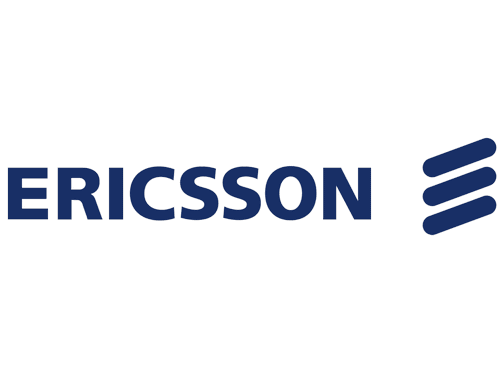The Marketing mix of Ericsson analyses the 4Ps of Ericsson, which includes the Product, Price, Place, and Promotion of Ericsson. Lars Magnus Ericsson founded Ericsson almost 140 years ago in Sweden. Ericsson is a publicly traded company with a presence in more than 180 countries and employs 110,000 people.
During 2012, Ericsson had a handsome hold over the 2G/3G/4G market; Ericsson’s share accounted for somewhere near 35 percent, which made it the authoritative leader in mobile phones and the telecommunication vertical.
Ericsson is headquartered in Stockholm, Sweden, and has over 35000 patents in telecommunication, Information Protocol services, and Broadband. Huawei, Samsung, Motorola, and Apple Inc. are some of Ericsson’s top competitors in the international mobile multimedia devices market.
Ericsson had to face tough competition from Bell Group in the United States of America, but it expanded to countries like Australia with great ease.
About Ericsson
- Type: Telecommunications equipment manufacturer
- Industry: Telecommunications
- Founded: 1876
- Founder: Lars Magnus Ericsson
- Headquarters: Stockholm, Sweden
- Area served: Worldwide
- Key people: Borje Ekholm (Chairman) and Aditya Puri (CEO)
- Number of employees: 101,000
Table of Contents
Ericsson Product Strategy
Ericsson is among those elite companies that deal in almost every sphere of a particular sector of the corporate world. Regarding Ericsson, the industry it sells entirely is telecommunication, mobile phones, and broadcasting.
The product mix of Ericsson in 2023 is as follows(Source)
- Network Infrastructure: Radio Access Network (RAN) equipment, Including 4G and 5G base stations and antennas; Core Network solutions, Such as Evolved Packet Core (EPC), 5G Core, and Cloud Core; Transport Solutions: Providing backhaul and fronthaul connectivity, Fixed Wireless Access (FWA) solutions: Enabling wireless broadband services.
- Services: Managed Services: Network management and operations outsourcing, Consulting and Systems Integration: Helping customers design, integrate, and optimize their networks; Support Services: Maintenance, training, and technical support; Network Design and Optimization: Ensuring network performance and efficiency.
- Software: Network Management and Orchestration: Software solutions for managing and orchestrating network resources, OSS/BSS (Operations Support Systems/Business Support Systems): Software to manage operations and customer billing.
- Cloud and Edge Computing: Edge Computing: Enabling low-latency processing at the network edge; Cloud Infrastructure: Offering cloud-native solutions for network virtualization.
- IoT (Internet of Things): IoT Connectivity Platforms: Enabling IoT device connectivity and management, IoT Software and Services: Solutions for various IoT use cases.
- Digital Services: Digital BSS (Business Support Systems): Enabling digital business operations and customer engagement, Digital Experience Platforms: Enhancing user experiences and monetization.
- 5G Solutions: 5G Networks: Enabling the deployment of 5G technology for faster and more reliable wireless communication, 5G Platforms and Solutions: Including IoT, private networks, and fixed wireless access solutions.
- Enterprise and Industry Solutions: Private Mobile Networks: Offering dedicated mobile networks for enterprises; Industry-specific solutions: Tailored offerings for sectors like automotive, utilities, and manufacturing.
- Managed Cybersecurity Services: Security services to protect networks and data from cyber threats.
- Radio System Hardware: Radio modules and components for various frequency bands and technologies.
Ericsson had 35% of 2G/3G/4G covered in 2012 because of its quality services before the competitors came into existence.
Ericsson Place Strategy
Ericsson was founded in Sweden and started to expand globally; it was only around 2000-2002 that Ericsson established itself as a known global enterprise and a global provider that provided people worldwide with access to the best of services.
Some of all the process and facts related to the international expansion of Ericsson are listed here:
- UK and Russia were the early global markets Ericsson decided to expand to
- Ericsson expanded to colonies of the UK with great ease. Other countries had to adopt Ericsson technology and products because their parent countries used it.
- Ericsson failed to set foot in the United States because of the fierce competition from Bell Group and Automatic Electric.
Today, Ericsson has established its foot in more than 200 companies; gone are the days when people used to go gaga over the handsets from Ericsson, but the love for its backend telecommunication tools and support continues to grow.
Here are five key aspects of Ericsson’s place strategy:
- Global Presence: Ericsson maintains a robust global presence with offices, sales teams, and service centers in multiple countries. This worldwide network allows them to serve a diverse customer base and efficiently respond to local market needs.
- Strategic Partnerships: Ericsson collaborates with telecom operators, system integrators, and technology partners to expand its reach. These partnerships enable them to integrate their solutions into the networks and services of their customers effectively.
- Customer-Centric Approach: Ericsson emphasizes customer proximity by establishing regional offices and support centers. This approach ensures they can provide timely support, maintenance, and technical assistance to their customers worldwide.
- Online Platforms: Ericsson leverages digital channels and online platforms to showcase its products and solutions. Customers can access information, engage in product demonstrations, and explore Ericsson’s offerings through their website and digital resources.
- Industry Events and Trade Shows: Ericsson actively participates in major industry events and exhibitions to demonstrate its latest technologies and innovations. These events serve as a platform to engage key stakeholders, including telecom operators, enterprises, and government representatives.
Ericsson Pricing Strategy
Ericsson continues to stun the market by producing remarkable technology and technological gadgets. The enterprise continues to empower the telecommunication industry for a better tomorrow. There was a time when Ericsson was ruling the gained market share among mobile phone providers, but globalization has forced it to limit its expansion. The growth of local and veteran enterprises has caused them to cut prices and limit expenditure.
Lately, Ericsson has started taking the Internet seriously, and now it is expanding its operation over the Internet. Enterprises and local vendors worldwide are contacting for business alliances, joint ventures, and partnerships. The growth is continually increasing but at a limited and highly competitive pricing for Ericsson.
The technological and final product breakthroughs and startup culture continually force Ericsson to keep its pricing under control and lure customers with new mobile phones.
The following key principles encapsulate their price strategy:
- Value-Based Pricing: Ericsson adopts a value-based pricing approach, where the cost of their solutions is directly correlated with the immense value they bring to customers. Pricing is determined by technological superiority, network efficiency, and the long-term benefits of their products.
- Customization for Complex Solutions: For large-scale projects and complex network deployments, Ericsson offers customized pricing packages tailored to meet each customer’s specific needs. This allows flexibility in pricing while ensuring that clients receive precisely what they require.
- Competitive Positioning: Ericsson is tuned to the competitive landscape and strategically positions its pricing to reflect its leadership in technology and innovation. While offering premium solutions, they remain competitive by demonstrating their products’ superior quality and reliability.
- Long-Term Partnerships: Ericsson fosters long-term customer relationships and often employs subscription-based models or service contracts. This creates a predictable revenue stream for the company while ensuring ongoing customer support and product updates.
- Strategic Bundling and Licensing: Ericsson utilizes bundling strategies, packaging-related services, and products to provide customers with cost efficiencies. They also employ licensing models for software solutions, enabling customers to pay for their needed features.
Ericsson Promotion Strategy
Once upon a time, Ericsson was an enterprise that produced intelligent and quality cell phones. Still, with competitors like Samsung and Motorola taking over its market share, Ericsson decided to pivot and concentrate more on the telecommunication and broadcasting business instead of manufacturing camera phones.
Ericsson used to indulge in extravagant marketing with cell phones in the market, but today, the marketing has been reduced to bare requirements and initials. With almost inconspicuous marketing, Ericsson is targeting a different customer base, a target audience that is more saturated and into business development instead of a loud consumer base.
Promotions final sales are a subject that depends upon the customer base you decide to target with only broadcasting and telecommunication support services for enterprises; Ericsson is left with no customer base to target.
Ericsson’s promotion strategy comprises:
- Industry Thought Leadership: Ericsson positions itself as an industry thought leader by regularly publishing whitepapers, reports, and articles highlighting its telecommunications and networking expertise. These thought leadership pieces educate the market and showcase Ericsson’s commitment to advancing the industry.
- Global Event Participation: Ericsson actively participates in major industry events, such as the Mobile World Congress and CES, unveiling their latest technologies and engaging with key stakeholders. These events provide a platform to demonstrate their innovations, network with potential customers, and strengthen brand recognition.
- Digital Marketing and Social Media: Ericsson utilizes digital channels, including its website and social media platforms, to disseminate information about its products, solutions, and industry insights. They reach a global audience through targeted online advertising and social media campaigns, ensuring their message reaches industry professionals and potential customers worldwide.
Some Recent Video ads and Print ads of Ericsson are:
Liked this post? Check out the complete series on Marketing Mix

